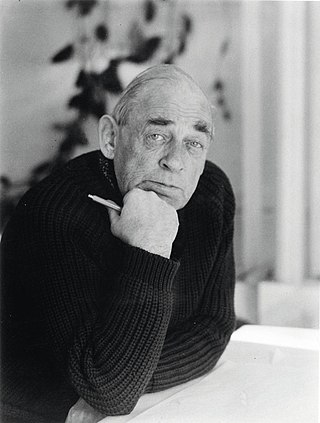
Hugo Alvar Henrik Aalto was a Finnish architect and designer. His work includes architecture, furniture, textiles and glassware, as well as sculptures and paintings. He never regarded himself as an artist, seeing painting and sculpture as "branches of the tree whose trunk is architecture." Aalto's early career ran in parallel with the rapid economic growth and industrialization of Finland during the first half of the 20th century. Many of his clients were industrialists, among them the Ahlström-Gullichsen family, who became his patrons. The span of his career, from the 1920s to the 1970s, is reflected in the styles of his work, ranging from Nordic Classicism of the early work, to a rational International Style Modernism during the 1930s to a more organic modernist style from the 1940s onwards.

Tallinn is the capital and most populous city of Estonia. Situated on a bay in north Estonia, on the shore of the Gulf of Finland of the Baltic Sea, Tallinn has a population of about 461,000 and administratively lies in the Harju maakond (county). Tallinn is the main governmental, financial, industrial, and cultural centre of Estonia. It is located 187 km (116 mi) northwest of the country's second largest city, Tartu; however, only 80 km (50 mi) south of Helsinki, Finland, also 320 km (200 mi) west of Saint Petersburg, Russia, 300 km (190 mi) north of Riga, Latvia, and 380 km (240 mi) east of Stockholm, Sweden. From the 13th century until the first half of the 20th century, Tallinn was known in most of the world by variants of its other historical name Reval.

Tartu is the second largest city in Estonia after Tallinn. Tartu has a population of 97,435. It is 186 kilometres southeast of Tallinn and 245 kilometres northeast of Riga, Latvia. Tartu lies on the Emajõgi river, which connects the two largest lakes in Estonia, Lake Võrtsjärv and Lake Peipus. From the 13th century until the end of the 19th century, Tartu was known in most of the world by variants of its historical name Dorpat.

Eero Saarinen was a Finnish-American architect and industrial designer who created a wide array of innovative designs for buildings and monuments, including the General Motors Technical Center in Warren, Michigan; the passenger terminal at Dulles International Airport outside Washington, D.C.; the TWA Flight Center at John F. Kennedy International Airport; and the Gateway Arch in St. Louis. He was the son of Finnish architect Eliel Saarinen.

Daniel Libeskind is a Polish–American architect, artist, professor and set designer. Libeskind founded Studio Daniel Libeskind in 1989 with his wife, Nina, and is its principal design architect.
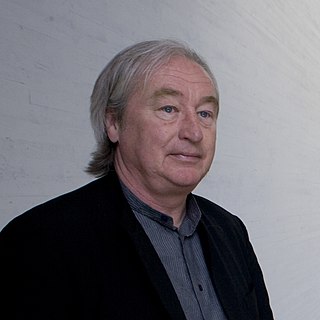
Steven Holl is a New York–based American architect and watercolorist.

Yrjö Kalervo Sotamaa is a Finnish designer and design strategist. Sotamaa is Professor Emeritus of Design Innovation in the Aalto University School of Art, Design and Architecture and President Emeritus of the University of Art and Design Helsinki (TAIK). He served as the president of TAIK from 1986 until 2008. He earned his MA in Interior Architecture and Furniture Design from TAIK, where he studied with Kaj Franck and Antti Nurmesniemi.

Gunnar Birkerts was a Latvian American architect who, for the most of his career, was based in the metropolitan area of Detroit, Michigan.
The year 2006 in architecture involved some significant architectural events and new buildings.
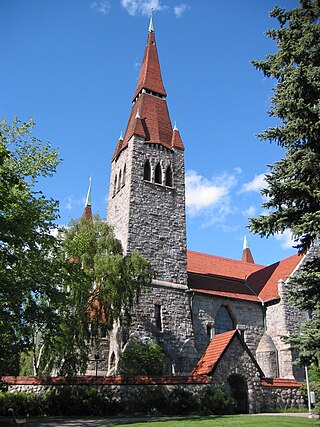
The National Romantic style was a Nordic architectural style that was part of the National Romantic movement during the late 19th and early 20th centuries. It is often considered to be a form of Art Nouveau.
Ramses Wissa Wassef (1911–1974) was an Egyptian architect and professor of art and architecture at the College of Fine Arts in Cairo and founder of the Ramses Wissa Wassef Art Centre.
Held in Prague once every four years since 1967, the Prague Quadrennial of Performance Design and Space or Prague Quadrennial is the world's largest event in the field of scenography, consisting of a competitive presentation of contemporary work in a variety of performance design disciplines and genres including costume, stage, lighting, sound design, and theatre architecture for dance, opera, drama, site-specific, multi-media performances, and performance art.

NATO CCD COE, officially the NATO Cooperative Cyber Defence Centre of Excellence, is one of NATO Centres of Excellence, located in Tallinn, Estonia. The centre was established on 14 May 2008, it received full accreditation by NATO and attained the status of International Military Organisation on 28 October 2008. NATO Cooperative Cyber Defence Centre of Excellence is an international military organisation with a mission to enhance the capability, cooperation and information sharing among NATO, its member nations and partners in cyber defence by virtue of education, research and development, lessons learned and consultation.
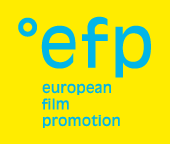
European Film Promotion (EFP) is an organisation with a mission of promoting European films internationally. A network of 38 national film promotion institutes which represent films from their respective territories. Under the EFP flag, the members team up on initiatives to promote the diversity and the spirit of European cinema and talent at key international film festivals and markets.
Jüri Okas is an Estonian architect, installation artist, and printmaker.
Museum of Architecture or Architecture Museum may refer to:
The year 2014 in architecture involved some significant architectural events and new buildings.
The International Council of Museums defines a museum as "a not-for-profit, permanent institution in the service of society that researches, collects, conserves, interprets and exhibits tangible and intangible heritage. Open to the public, accessible and inclusive, museums foster diversity and sustainability. They operate and communicate ethically, professionally and with the participation of communities, offering varied experiences for education, enjoyment, reflection and knowledge sharing.”
Kristaps Gulbis is a Latvian sculptor and artist known for numerous contemporary art projects in more than 25 countries. His works have been exhibited at the Venice Biennale, the Museum of Modern Art in Hokaido, Japan, and at metropolitan sites in London, Paris, Rome, Berlin, Riga, Moscow and other European cities, as well as in New York, Seoul, and Kaohsiung, Taiwan. The visual art projects curated, directed and managed by Gulbis have been set in England, Hungary, Germany, Latvia, Estonia and elsewhere in Europe.
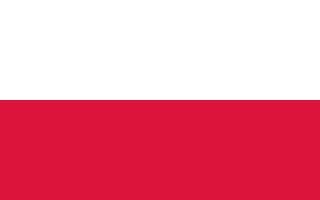
This is a list of the Poland national football team results since 1921 to 1939.











